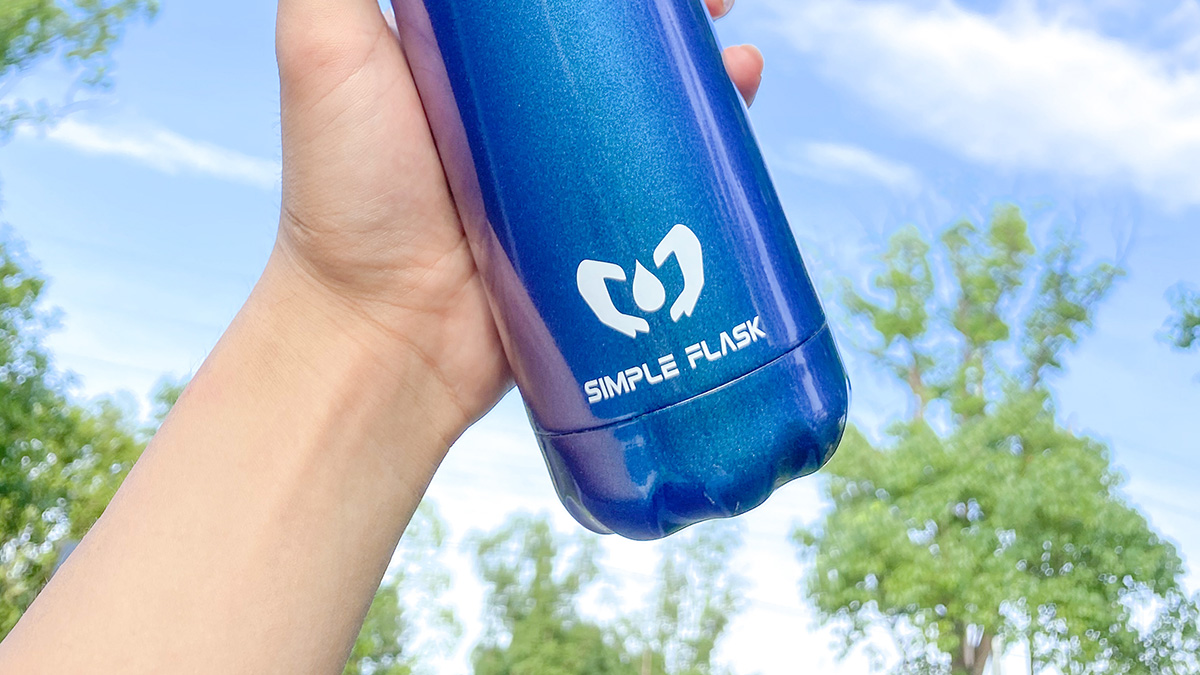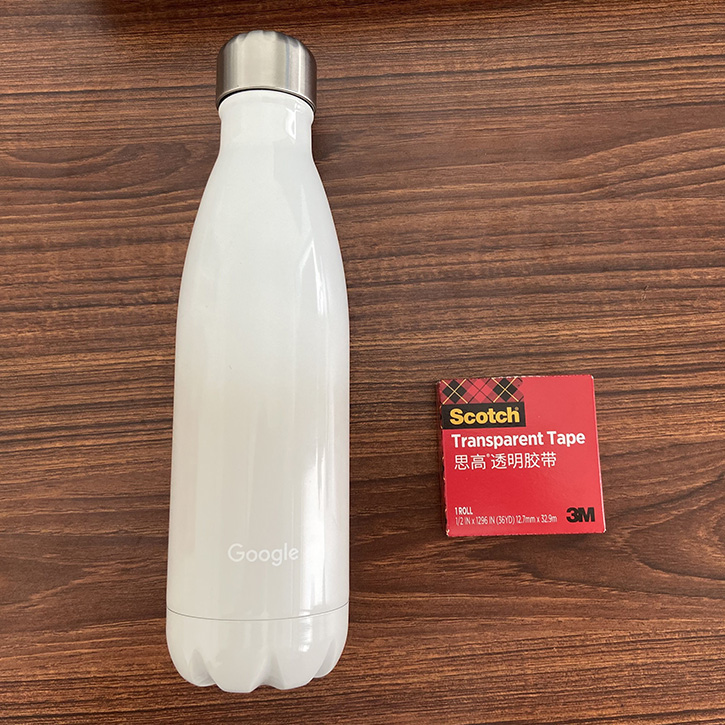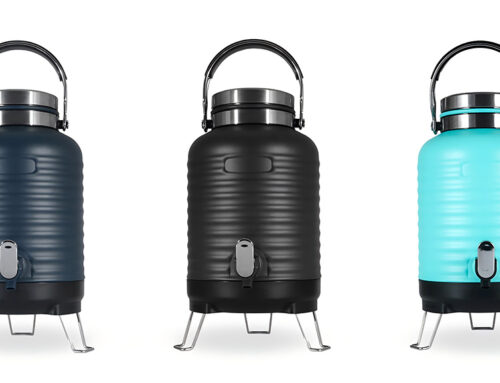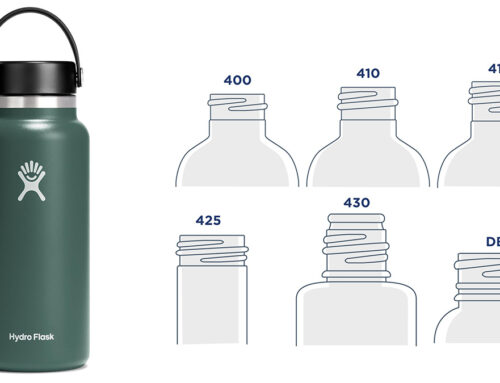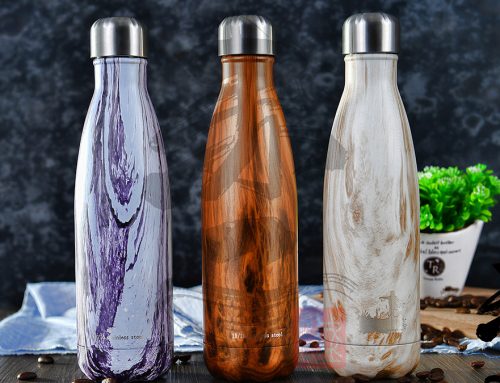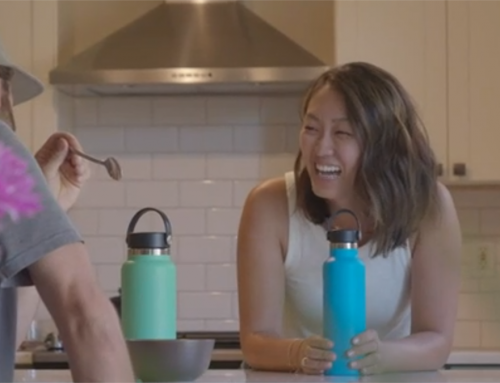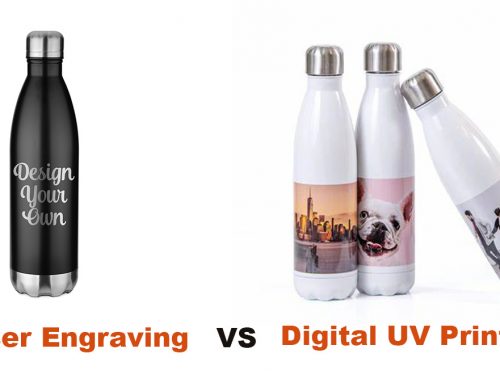Approximately half of KingStar’s water bottles are made with silk screen printing technology (known as screen printing) logos. Screen printing logo is popular due to its durability, low cost and large logo size feasibility. However, some small stainless steel water bottle manufacturers have poor screen printing technology, and the logos of the water cups produced by them are easy to peel off and fade. KingStar team has summarized the causes for the poor screen printing logos of stainless steel water bottles and analyzed them in turn. Here we also share our findings with small scale or emerging stainless steel water bottle manufacturers as well as buyers.
I. Preparation before Printing
-
Preparation before Silk Screen Printing
①Silk screen printing plate: Check the plate according to the drawing, the pattern lines must be clear, the size be correct, and the process requirements be met. The plate should be flat evenly and the tension should meet the inspection requirements. Seal the place where no ink leakage is needed, and protect the bonding place of the screen frame and screen.
②Ink: Choose the correct ink according to different surface treatments (spray painting,
powder coating, rubber coating, polishing) of stainless steel water bottles. The hue of the ink must meet the requirements and the viscosity should be adjusted appropriately.
③The stainless steel water bottles have went through pre-printing process, are put in place
and get rid of dirt & dust.
④Other aspects such as environment, hack and dry equipment.
-
Machine Installation and Adjustment
Matters needing attention:
①The screen printing plate must be level with the table plate, and the distance between the
two must be the same on all four sides. Otherwise, the uneven pressure of the squeegee glue and the unequal amount of ink will cause the reproduced color of the pattern to be either dark or light, and even the deformation of the pattern.
②Positioning: Positioning is vital to ensuring the consistency of printed matter.
Vertical edge positioning: the object that is the same height (can be lowered by 0.1-0.3mm) as the stainless steel water bottle is close to the stainless steel water bottle and positioned tightly to the table. This method is suitable for printing with straight-edged shapes and with low precision.
Pin positioning: For prints that require a large number of overprints, high size requirements, or mold processing, it is best to use pin positioning. This method is suitable for sheet printing.
Mold fixture positioning: This method can be applied to occasions where some special-shaped objects cannot be fixed at the edges /corners or have high size requirements. Usually, the stainless steel water bottle is placed in the mold fixture for positioning.
③Adjustment of the screen distance: The distance refers to the one between the screen and
the stainless steel water bottle. If the screen distance is too large, the ink cannot be squeezed onto the stainless steel water bottle to form a fixed pattern. If the screen distance is too small, the screen cannot rebound quickly after the squeegee moves forward, and it will be out of contact with the substrate, causing ink rubbing and poor printing.
If the screen is large, the spacing should be enlarged; if the printing accuracy is high, then the screen spacing should be shortened. In short, if the screen can rebound quickly after the squeegee shifts, then the spacing is correct and proper.
The screen distance will affect the printing size, while the precision printing requires a large screen of stable tension.
A large spacing will cause the elastic damage, loss and even breakage of the silk screen due to overloaded strength. It will also cause the photosensitive glue of the screen plate to peel off from the silk screen, resulting in the poor screen plate.
-
Factors Affecting the Ink Layer in Printing
①The screen printing plate: Generally, the thickness of the silk screen plus 1/2 or 1/3 of the
thickness of the photosensitive film is the printing thickness. Select the silk screen according to the requirements of the product so as to make the due thickness of the photosensitive film of the screen plate.
②The printing speed: If the speed is fast, the ink film is thin, vice versa.
③Squeegee glue: The ink layer is thin when the knife edge is sharp, and the ink layer is
thick when the knife edge is blunt; the ink layer is thin when the squeegee angle is large; the ink layer is thick when the squeegee angle is small. If the squeegee hardness is high then the ink layer is thin; if it is small, then the ink layer is thick.
④Ink quality: The viscosity, thixotropy, and solid content of the ink also affect the thickness
of the ink layer.
-
Matters Needing Attention in Printing
①Trial printing: At the beginning of the printing, the quality of the printed object may not be so satisfactory, which is quite normal. In general, the quality can be stable after 3 or 4 trials.
②Wiping the screen plate: When the silk screen is blocked or dust adheres to the screen, use a dust-free cloth/paper to wipe dry it or dip it with printing solvent. Try to wipe the printing surface as little as possible. After the printing solvent is completely dry, the ink shall be covered for printing.
③Back-inking: The amount of back-inking, thickness, and evenness all affect the reproduction quality of the pattern. Therefore, the ink must be returned in time, which can avoid screen blocking and ensure the quality of printing.
④Ink dilution: After the ink is diluted as required, the ink, especially the one of solvent type, needs to be adjusted as its viscosity may change during printing. Do not pour the diluent directly into the screen plate, which may easily lead to chromatic aberration and damage the screen plate. It is advised to add the adjusted ink in time.
⑤Washing the plate: After printing, the screen plate must be cleaned immediately: Tear off the protective tape on the screen, and use suitable screen-washing water to thoroughly remove the ink on the screen plate.
⑥Inspection: In printing, the workpiece should be inspected at any time, and the problem should be handled in time.
-
Requirements for Color Sequence Printing
High-precision color sequence printing has high requirements for the following aspects:
①The film: The film must be accurate and its expansion ratio must be small, ensuring the stability and consistency of the size.
②The screen plate: The size of the screen frame, the angle of stretching the screen, the tension of the screen plate, and the position of the pattern must be consistent.
③The printing parameters: The screen distance, printing pressure, hardness of squeegee, printing route and the viscosity of ink must be consistent.
④The color sequence
Front printing: In addition to four-color dot printing, the background color is printed first, and the face color second. Print the large size first, then the small size. The dark color is printed first, and the light color later. If the color is overlapped, the light color is printed first, and then the dark color is printed.
Back printing: It is difficult to print the reverse side of a transparent object, especially an object of overlapped colors. In general, darker colors are handled first, and negative film plate making is adopted to eliminate chromatic aberration, which occurs as the dark colors will cover bright ones. After dark background colors are printed, bright colors are printed at the reserved positions.
II. Common Problems and Causes in Silk Screen Printing
-
The ink does not cover the whole surface of the stainless steel water bottle (uneven ink leakage). Why? There are ten causes:
①The excessively high screen mesh leads to poor ink permeability.
②The excessively thick photosensitive film leads to poor ink permeability.
③There are scars on the squeegee blade.
④The squeegee printing pressure is insufficient, or the printing pressure is uneven.
⑤The gap between the screen printing plate and the stainless steel water bottle is too large.
⑥The high ink viscosity results in poor ink permeability.
⑦The ink returned to the squeegee unevenly leaks.
⑧The printing speed is too fast, causing uneven ink supply.
⑨There is inadequate ink on the screen plate.
⑩ The printing platform/table is not even.
-
After printing, the ink leaks, resulting in side shadows or ghost images, and the pattern is blurred. Why? There are nine causes:
①The edges and corners of the squeegee blade are worn, resulting in poor effect of ink breaking in the squeegee.
②The squeegee angle is too small, causing the ink supply to be too large.
③The viscosity of the ink is too low, and the ink will ooze after printing.
④The ink and solvent are not stirred uniformly, and the ink with more solvent will penetrate after printing.
⑤After the screen printing plate is cleaned, the solvent remains.
⑥The screen printing plate and the stainless steel water bottle are dislocated.
⑦Improper selection of the amount of ink and the number of screen meshes. The fineness of the ink is fine and the number of screen meshes is too low.
⑧Pause or repeat printing during screen printing.
⑨Scrape the glue hard when returning the ink. And when it is not scraped, a small amount of the printed material has already been squeezed out of the screen mesh.
-
The screen mesh is blocked. Why? There are seven causes:
①The stainless steel water bottle is not smooth or has low strength, and the powder falls off.
②The pigments and other solid particles in the ink are large, which can easily block the mesh during screen printing.
③The high temperature and low humidity speed up the evaporation of solvents in the ink, increasing the viscosity of the ink, and the screen mesh is then blocked. The long downtime and poor fluidity of the ink also lead to the screen mesh blockage.
④The screen printing plate has been placed for a long time, and it has not been cleaned before printing, which will cause dust to stick to the screen mesh.
⑤Excessive pressure during squeegee leads to the large curvature of the squeegee, resulting in inadequate surface contact during squeegee. So the ink can not be scraped by the squeegee every time. The residual ink is left on the printing plate, which later blocks the screen mesh.
⑥The screen printing plate cannot be separated from the stainless steel water bottle after scraping due to the small screen distance. and the printing surface of the printing plate adheres to the ink when it is lifted, which is easy to cause screen mesh blockage.
⑦There are ghost images in the pattern part during plate making.
-
There are burrs and jagged edges on the edges of the pattern. Why? There are six causes:
①The resolution of the photosensitive glue is not high, resulting in broken or incomplete fine lines.
②The silk screen printing plate is underexposed or over exposed, and burrs (jaggies) will appear during development accordingly.
③The printing surface of the screen printing plate is uneven and there are gaps, through which the ink overflows when scraping the glue.
④The original film is bad.
⑤Improper angle of stretching the screen.
⑥If the number of the screen mesh is too low, burrs will appear during plate making.
-
After the screen printing, the ink and the stainless steel water bottle are not firmly bonded. Why? There are nine causes:
①The surface of the stainless steel water bottle is dirty with oil, dust, etc., or the plastic products are not fully treated before printing.
②The ink itself is not strong in adhesion. In this case, this kind of ink should be replaced.
③Improper selection of dilution solvent.
④The ink has expired and deteriorated.
⑤The screen distance is too large.
⑥Improper addition of additives.
⑦Too little solvent added.
⑧The ink does not match the stainless steel water bottle.
⑨Incomplete drying.
-
There are bubbles on the ink surface of the silk-screened finished product. Why? There are four causes:
①The squeegee printing speed is too fast or it dries too fast.
②The ink itself has bubbles or it is mixed unevenly.
③The screen is contaminated.
④The surface of the stainless steel water bottle is dirty or oily.
-
The screen ink layer is too thick. Why? There are seven causes:
①The mesh number of the screen mesh is too low.
②The squeegee is too soft or the cutting edge is too round.
③The squeegee angle is too small.
④Too many printing inks are placed on the screen mesh.
⑤The pushing pressure of the squeegee is too small.
⑥The film of the screen printing plate is too thick.
⑦The scraper speed is too slow.
-
The pattern size of silk-screened products expands. Why? There are four causes:
①The viscosity of the ink is too low.
②The ink has high fluidity.
③The tension of the screen mesh is too low.
④The squeegee pressure is too high.
-
The reason why mesh marks would appear on the print is that the ink has low fluidity and dries too fast. There are three solutions:
①Choose more fluid inks
②Use the ink with a slower drying speed, or add some high-efficiency slow-drying agents to the ink.
③When making a screen plate, try to use a monofilament screen with a finer mesh diameter.

Click and read more about insulated stainless steel water bottle screen printing:
Custom Stainless Steel Water Bottle Logo Screen Printing Process
Adhesion Fastness Test Method and Criteria for Screen Printing Logos on Stainless Steel Water Bottles
If you are troubled by the quality of the silk screen logo, please contact us. As a leading custom insulated stainless steel water bottle manufacturer, KingStar will wholeheartedly provide you with technical support and share our experience.

